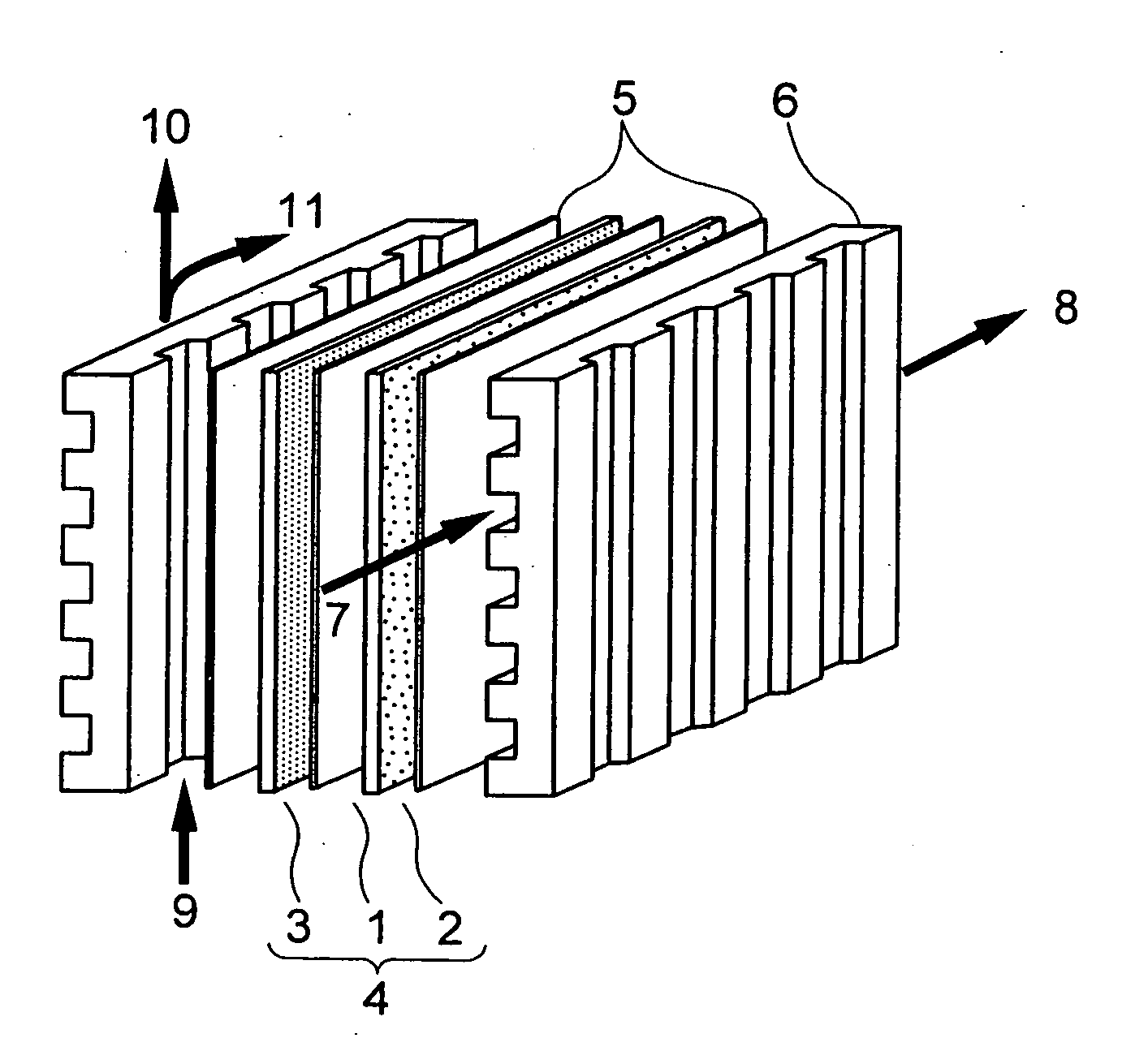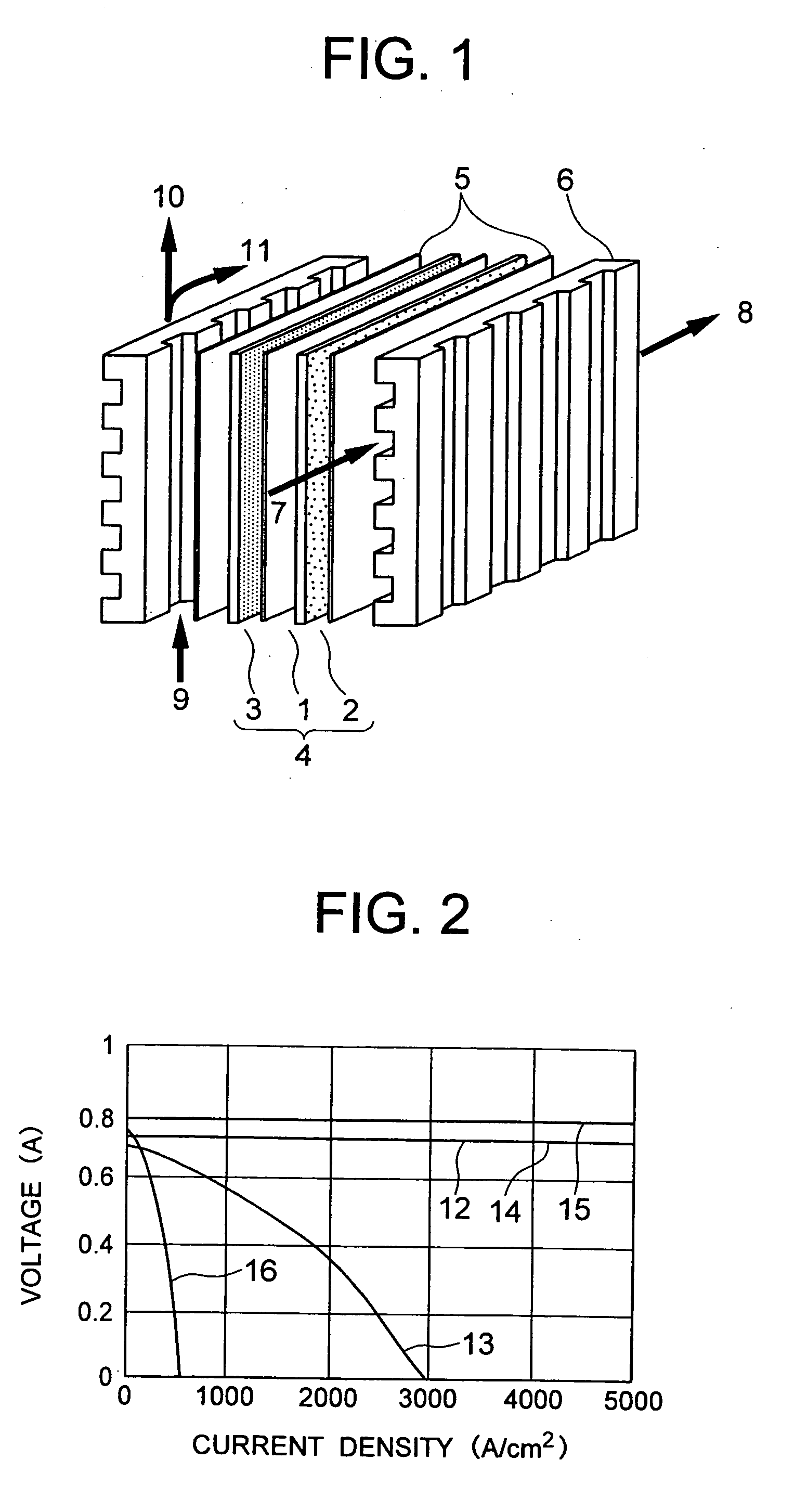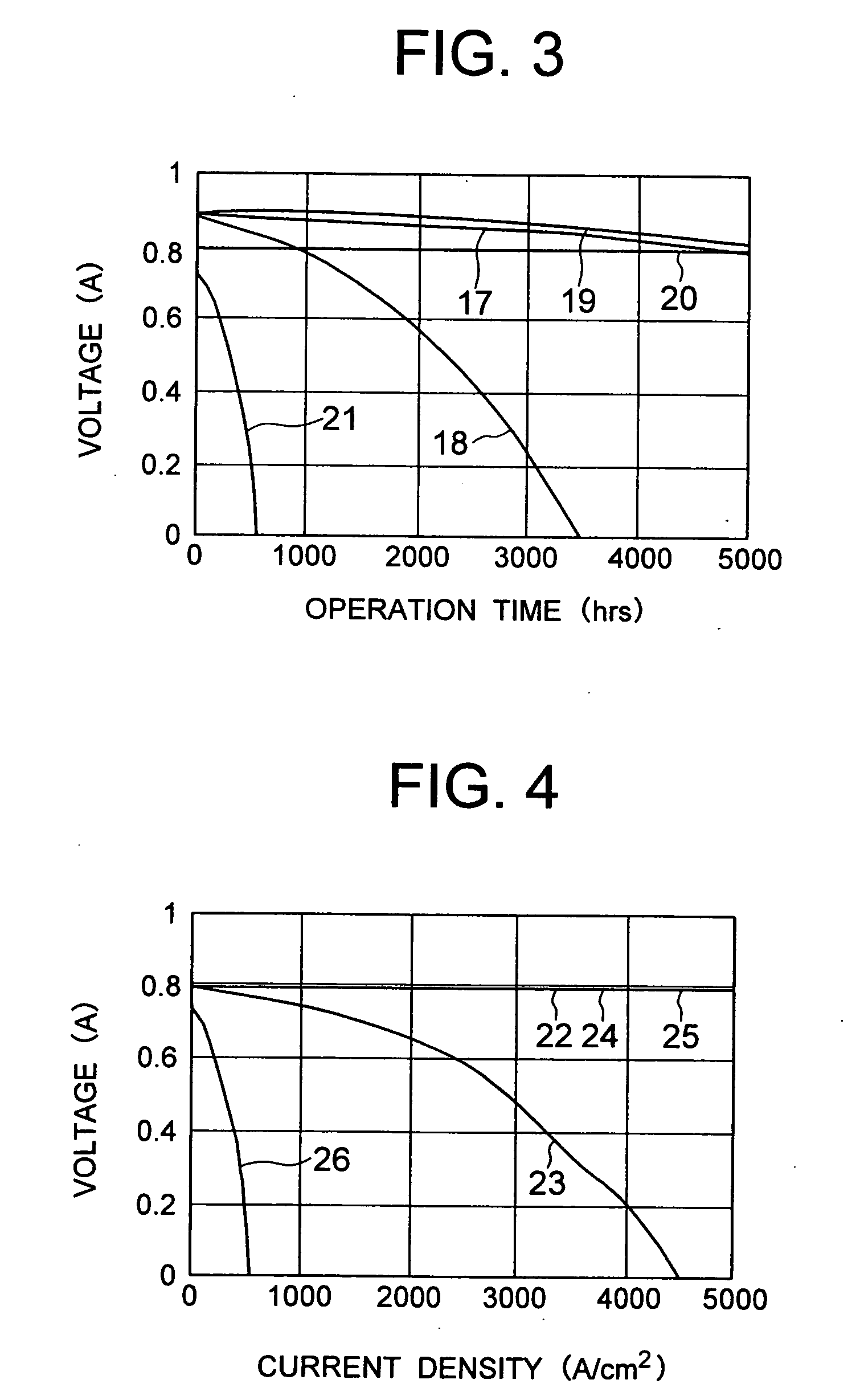Solid polyelectrolyte, assembly of membrane and electrodes, amd fuel cell
a technology of solid polymer and fuel cell, which is applied in the direction of non-aqueous electrolyte cells, sustainable manufacturing/processing, non-metal conductors, etc., can solve the problems of difficult production of fluorine-containing solid polymer electrolyte membranes, inability to use solutions, and high cos
- Summary
- Abstract
- Description
- Claims
- Application Information
AI Technical Summary
Benefits of technology
Problems solved by technology
Method used
Image
Examples
example 1
(1) Synthesis of a Sulfopropylated Poly(1,4-biphenylene Ether Ether Sulfone)
The inner atmosphere of a 500-ml four-necked round bottom flask equipped with a stirrer, a thermometer and a reflux condenser having a calcium chloride tube connected thereto was replaced with nitrogen. Then, 6.00 g (0.0155 mol) of a poly(1,4-biphenylene ether ether sulfone) [(—C6H4-4-SO2C6H4-4-OC6H4-4-C6H4-4-O—)n] dried by its maintenance at 110° C. for 10 hours and 150 ml of dehydrated chloroform for synthesis were placed in the flask and maintained at 60° C. for about 1 hour to effect dissolution. To the resulting solution was added 2.83 g (0.0232 mol) of propanesultone.
Subsequently, 3.10 g (0.0232 mol) of anhydrous aluminum chloride was added thereto with stirring over a period of about 30 minutes. After completion of the addition of anhydrous aluminum chloride, the resulting mixture was stirred with heating at 50° C. for 15 hours. The precipitate was filtered, washed with 150 ml of chloroform and th...
example 2
(1) Synthesis of a Sulfopropylated Poly(1,4-biphenylene Ether Ether Sulfone)
The inner atmosphere of a 500-ml four-necked round bottom flask equipped with a stirrer, a thermometer and a reflux condenser having a calcium chloride tube connected thereto was replaced with nitrogen. Then, 22.6 g (0.0155 mol) of a poly(1,4-biphenylene ether ether sulfone) [(—C6H4-4-SO2C6H4-4-OC6H4-4-C6H4-4-O—)n] dried by its maintenance at 110° C. for 10 hours and 150 ml of dehydrated 1,1,2-trichloroethane were placed in the flask and maintained at 113° C. for about 1 hour to effect dissolution. To the resulting solution was added 24.8 g (0.0155 mol) of propanesultone.
Subsequently, 6.19 g (0.0464 mol) of anhydrous aluminum chloride was added thereto with stirring over a period of about 30 minutes. After completion of the addition of anhydrous aluminum chloride, the resulting mixture was stirred at 113° C. for 30 hours. The polymer precipitated was filtered, washed with 150 ml of chloroform and then dr...
example 3
(1) Synthesis of a Sulfopropylated Poly(1,4-biphenylene Ether Ether Sulfone)
The inner atmosphere of a 500-ml four-necked round bottom flask equipped with a stirrer, a thermometer and a reflux condenser having a calcium chloride tube connected thereto was replaced with nitrogen. Then, 6.00 g (0.0155 mol) of a dried poly(1,4-biphenylene ether ether sulfone) [(—C6H4-4-SO2C6H4-4-OC6H4-4-C6H4-4-O—)n] and 150 ml of dehydrated chloroform for synthesis were placed in the flask and maintained at 60° C. for about 1 hour to effect dissolution. To the resulting solution was added 5.67 g (0.0464 mol) of propanesultone.
Subsequently, 6.19 g (0.0464 mol) of anhydrous aluminum chloride was added thereto with stirring over a period of about 30 minutes. After completion of the addition of anhydrous aluminum chloride, the resulting mixture was refluxed with stirring at 60° C. for 30 hours. The precipitate was filtered, washed with 150 ml of chloroform and then dried under reduced pressure. The drie...
PUM
| Property | Measurement | Unit |
|---|---|---|
| thickness | aaaaa | aaaaa |
| equivalent weight | aaaaa | aaaaa |
| permeable | aaaaa | aaaaa |
Abstract
Description
Claims
Application Information
 Login to View More
Login to View More - R&D
- Intellectual Property
- Life Sciences
- Materials
- Tech Scout
- Unparalleled Data Quality
- Higher Quality Content
- 60% Fewer Hallucinations
Browse by: Latest US Patents, China's latest patents, Technical Efficacy Thesaurus, Application Domain, Technology Topic, Popular Technical Reports.
© 2025 PatSnap. All rights reserved.Legal|Privacy policy|Modern Slavery Act Transparency Statement|Sitemap|About US| Contact US: help@patsnap.com



